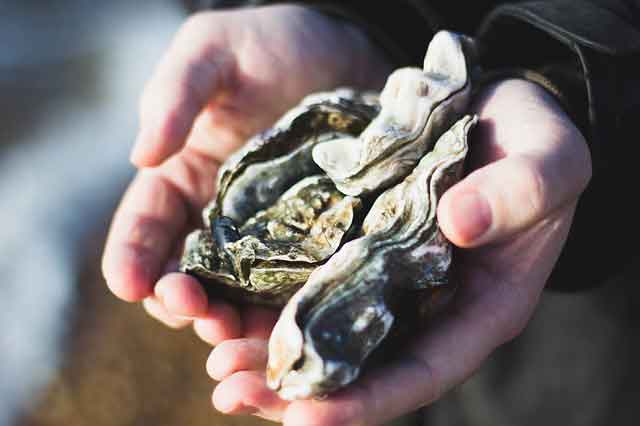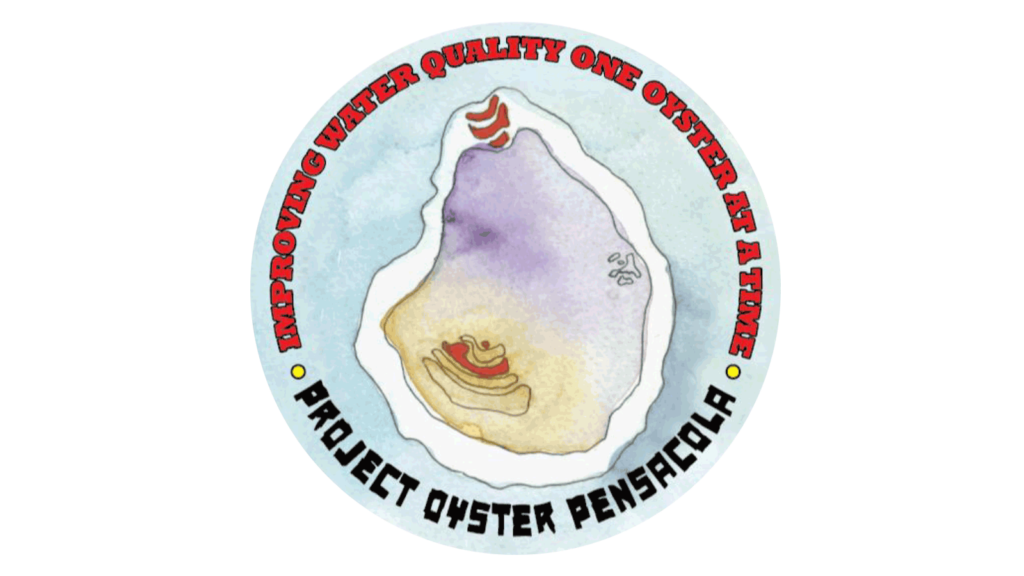
Water quality in coastal estuaries, bayous, creeks, and bays is not as healthy as it once was, mainly due to changes in the landscape. When landscape changes from rural areas such as the Blackwater River State Forest to an urban area (such as downtown Pensacola), the quality of the runoff after rain events shifts from healthy (natural filtration through leaves and sand) to an impaired stormwater runoff which enters our creeks, bayous and bays after each rain event. Examples of pollution from runoff include oil and gas from vehicles, metals from car brakes, detergents, or lawn care chemicals to name a few.
Oysters can play a big role in improving our local waters. Nutrient runoff, such as nitrogen, increases the growth of algae. When it dies and falls to the bottom, it decays. The decay process consumes oxygen, leaving the water with too little oxygen to support fish and other marine life. Oysters can remove nitrogen from the water like sheep grazing down a meadow. The fewer the algae, the more oxygen available for marine life.

Oysters are a big part of our local ecology and found throughout various pockets along the northern Gulf of Mexico Estuaries and bayous. Oysters are natural filtering mechanisms which get their food and oxygen by pumping large quantities of water across their gills. During feeding, oysters take in phytoplankton, algae, bacteria, viruses, sediments, and chemical contaminants. This increases water quality by reducing the amounts of contaminants, thereby promoting water clarity by reducing sediments. An adult oyster can filter approximately 35-50 gallons of water in a day under optimum conditions! Oysters create their own habitat by making oyster reefs, which offer protection, food, and habitat to many types of marine organisms.
Oysters are found throughout the Pensacola Bay system where salinities range from 8-25 parts per thousand (ppt) and spat collection may occur in various locations. These oysters are known to colonize dock pilings, rock jetties, and other areas wherever there is firm footing to support their weight.
The growth rate of the spat may be as high as 10 mm/month (1/4 “). This rate will slow as the oysters increase with age. The spat will take on the contour of the cultch material and will begin to resemble an adult oyster in a short time. Oyster growth is influenced by temperatures, salinity, food availability, and periods of exposure to air and population density. The Eastern oyster can live to be 25 to 30 years old.
Oysters have many enemies including the starfish; oyster drills (gastropods); Oyster Catcher (birds); various crabs and croakers & drum (fish).